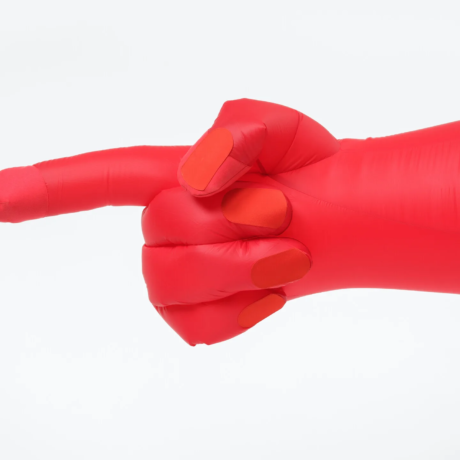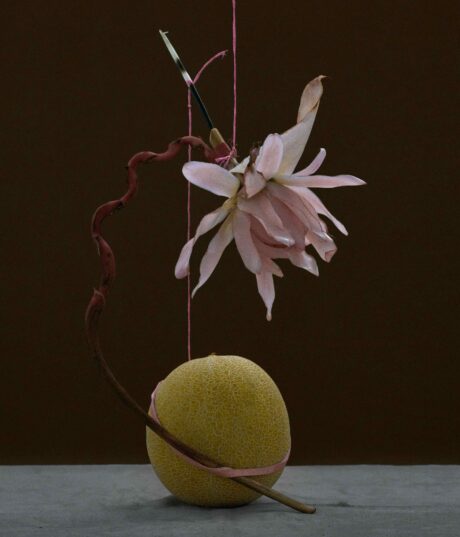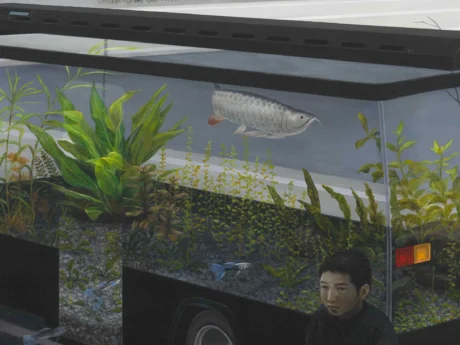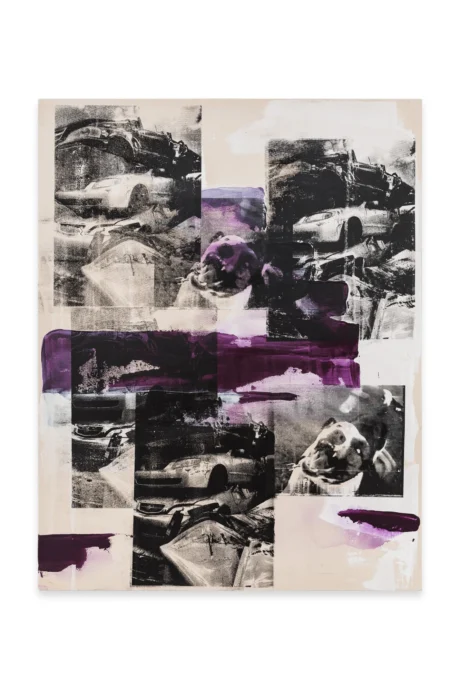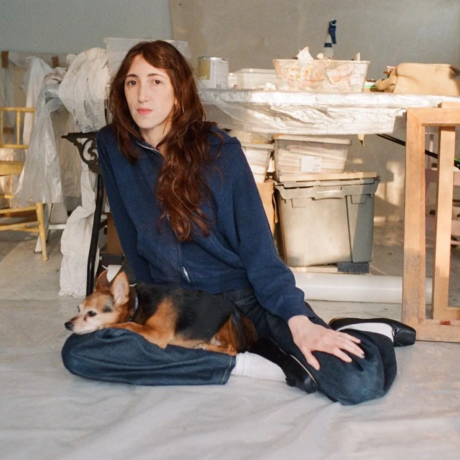Ella Slater speaks to visual artist Yuma Radne on the occasion of her first UK solo exhibition, Playing With Hands, at Incubator, London. Photography by Saffron Liberty.
Yuma Radne paints otherworlds: those of fiery hills and luminous sunsets; women embracing—and becoming—sea creatures; mountains made of food and food imbued with animacy. When I meet the artist at Incubator, where she is presenting Playing With Hands, her first UK solo exhibition, her canvases tread a playful dance between dream and reality. They are the product of a visual language that the artist has been developing ever since her childhood in Buryatia, a republic which sits at the intersection of Mongolia and Russia. ‘I always knew that I was going to be a painter,’ she tells me, and her biography supports this: she has attended art school since the age of five, and held her first institutional exhibition, at the National Museum of the Republic of Buryatia, at just seventeen. After a year studying monumental painting in St. Petersburg, Radne enrolled at the Art Academy of Vienna, where she still studies (albeit remotely, from London).
This new body of work unpacks the complexity of the artist’s Mongolian identity; simultaneously imbued with personal narrative and cultural history, her fantastical scenes use pleasure and play to untangle and reimagine the intersection of coloniality and resistance. Beneath the gaze of these painted environments, I speak to Radne about her artistic journey thus far, and the role that ancestry and indigeneity play in her practice.
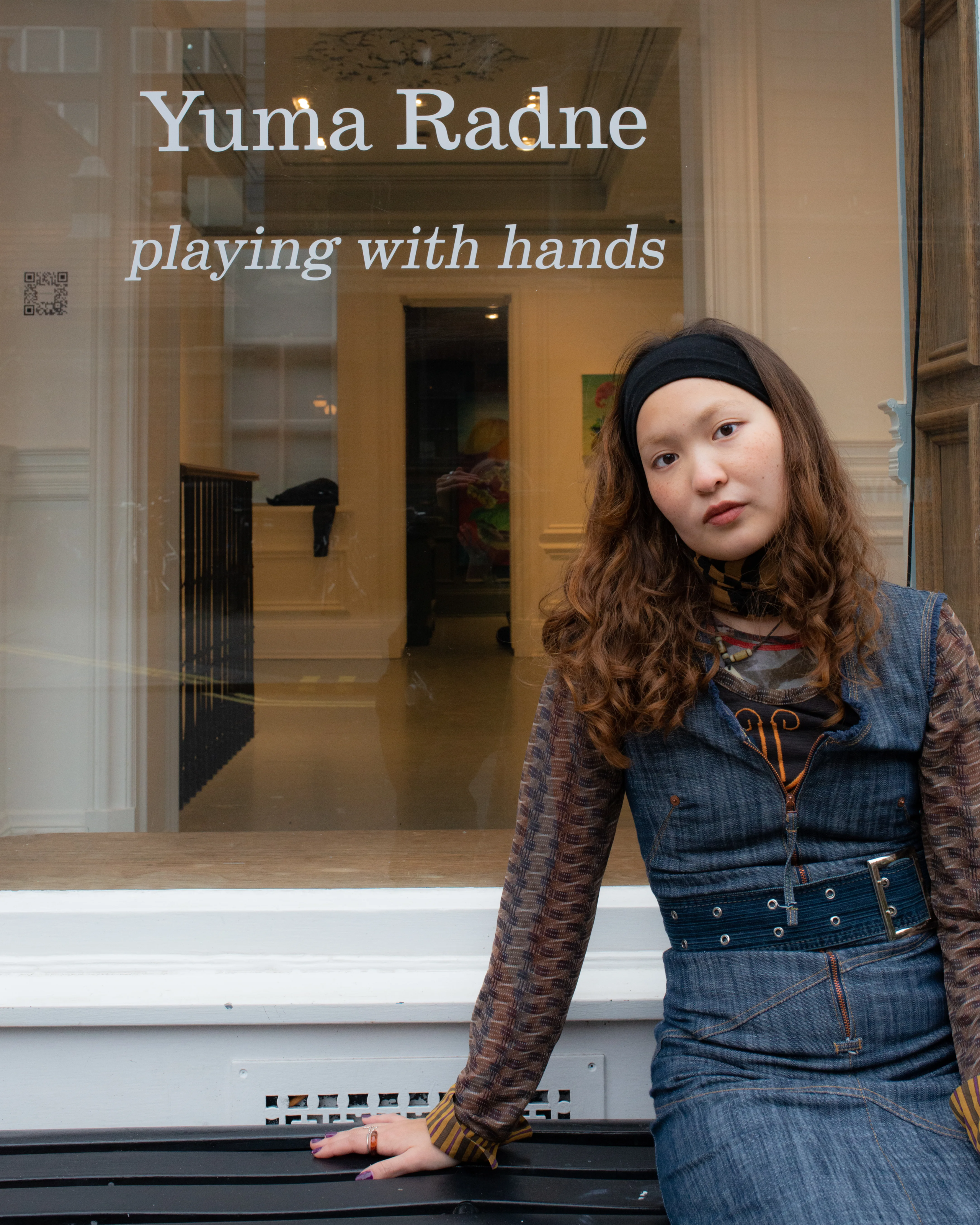
Ella Slater: Let’s start at the beginning. Tell me more about your own childhood; where were you born, and where did you grow up?
Yuma Radne: I’m from a city called Ulan-Ude, which is the capital of the Republic of Buryatia. Buryatia is at the north of Mongolia, which became part of the Russian Confederation, but ethnically and historically it belongs to Mongolia. There are many parts of Russia which are not Russian. I was brought up there as a Buryat, which one of the big tribes of Mongolia. It was very interesting to grow up in such a place, although I didn’t realise it while I was there.
My older sister is a sociologist, and when I was a teenager, she was researching Buryat identity and how it is influenced by Russian, Soviet, and Mongolian culture, and exists at this intersection. Nowadays, I don’t think identities are so fixed; they are fluid. At that time, I’d been painting my whole life, and I thought, now I am actually going to start painting Buryat people. I started painting my friends, my sister, myself, in traditional clothes—mainly portraits—and posting them on Instagram. It was kind of big news, because the culture is quite oppressed. In the Soviet Union, in the 1930s, there was persecution of ethnic minorities—you weren’t allowed to speak your language or celebrate your traditions. for example. You can still kind of feel it there. That’s why it was new for people.
ES: So, although it was new for others, art was always a big part of your own life?
YR: I always wanted to be a painter. I always knew that I was going to be a painter. My parents said that nowadays, artists become architects or designers, so I needed to choose between them. But I had this inner wish that I just wanted to make paintings. I turned my bedroom into a studio; I moved all my furniture to the side and made space in one corner, and got an easel, and a canvas, and oil paints.
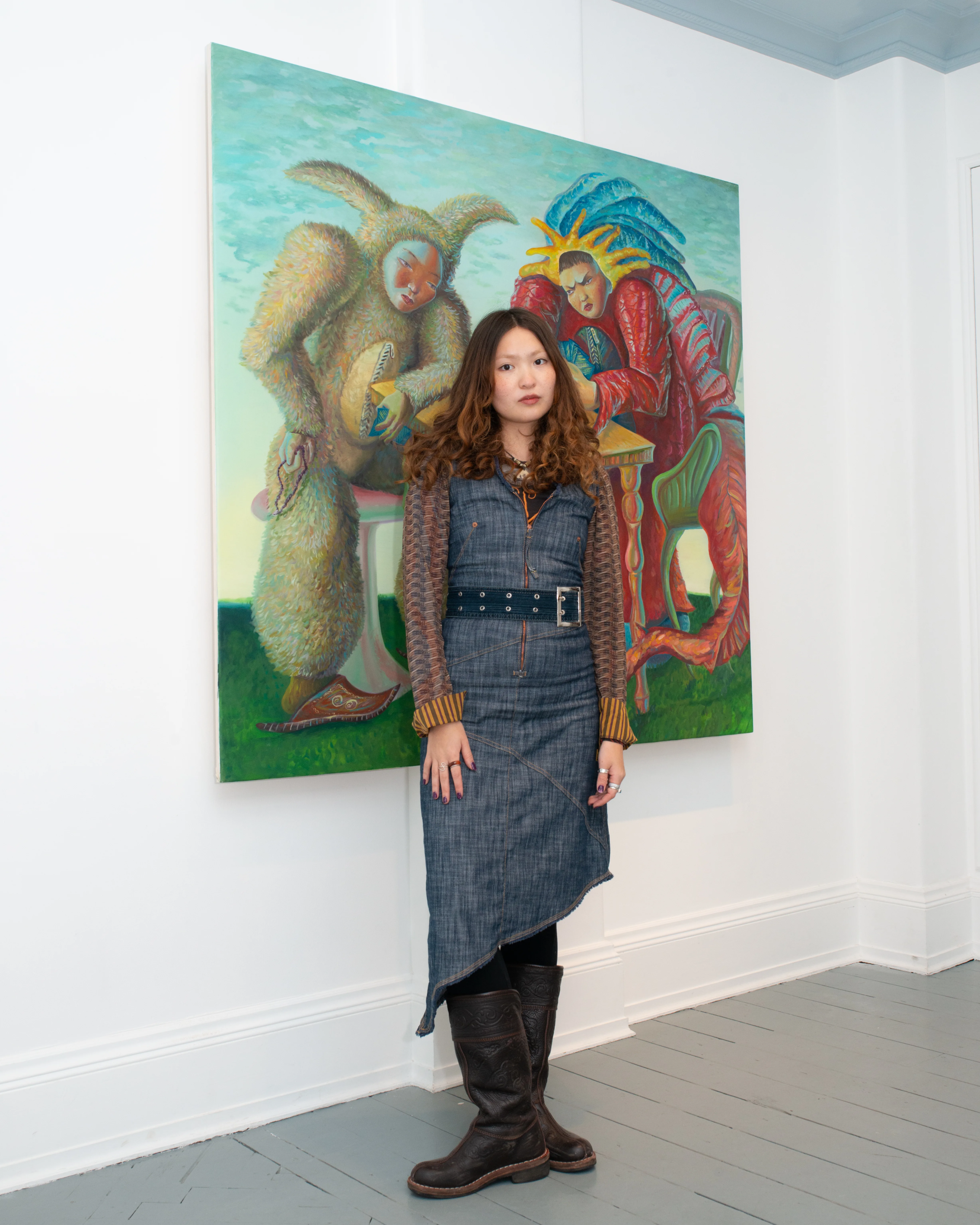
ES: You ended up studying monumental painting, in St. Petersburg.
YR: Yes. They didn’t have normal painting [at Shtiglitz Academy, in St. Petersburg], and monumental painting was a really hard class to get, which I thought was cool! I knew it was going to be traditional and that really wanted to be in Europe, but I thought, I can prove to my parents that I can do it for one year. It was a crazy experience, of course, because it was so traditional and so different to how I was used to painting. We would copy a fresco painting or a model, but they had their own rules: you need to show that muscle, or you need perfect proportions. I learnt things from this, but it was the first time that I was painting against my will. It was a year of suffering for me!
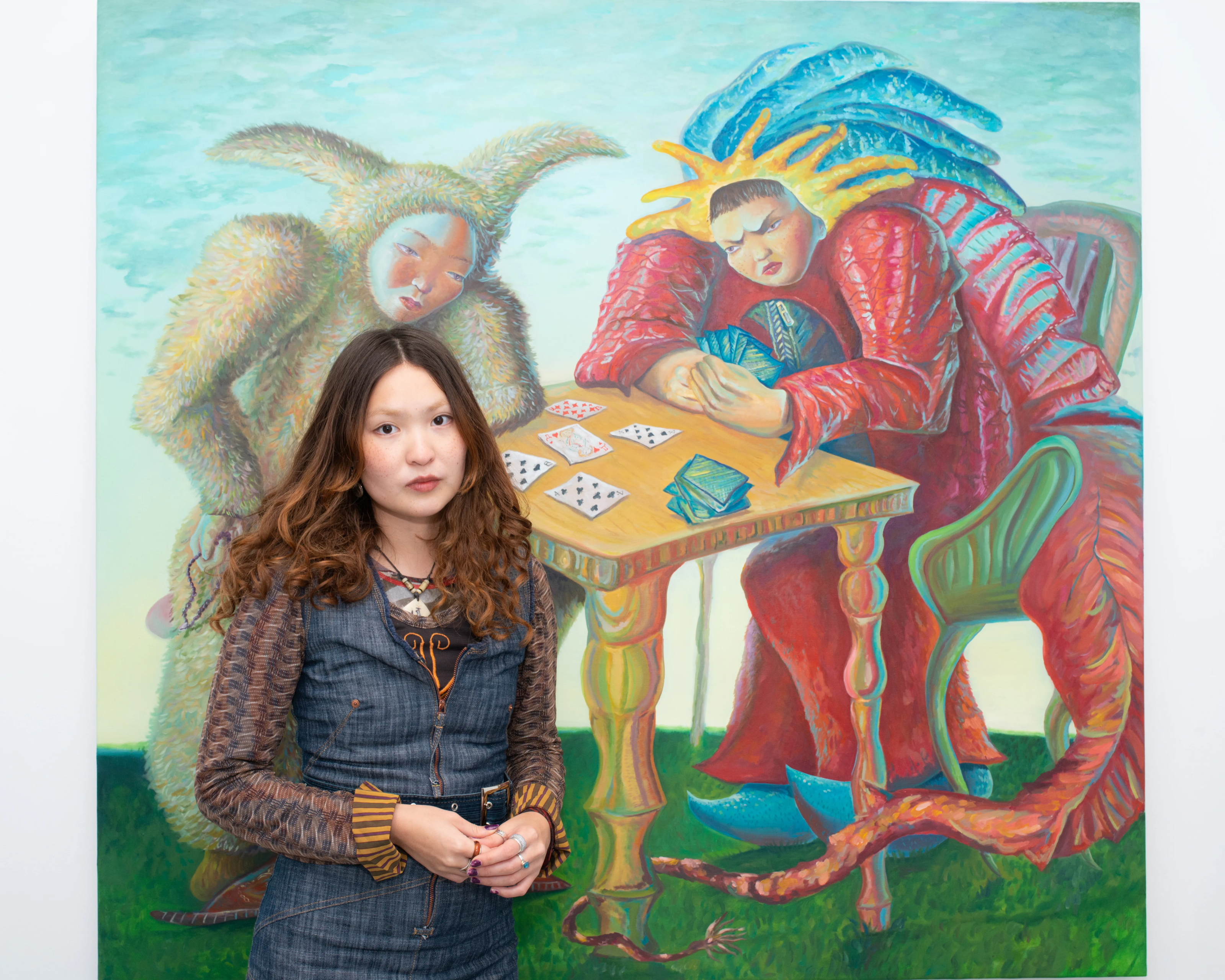
ES: But it didn’t put you off painting?
YR: I would come home at ten in the evening and paint in my room, because I couldn’t paint my own work in the academy. But it taught me so many things about myself, and painting, and life. Then I went to Austria—I was shocked how everyone is polite and soft, and no one makes you cry! In St. Petersburg, it had been so hardcore and harsh.
ES: You were probably so tough by that point! What was Vienna like, for you?
YR: It was perfect. The city is so beautiful, clean, and safe, and I was treated as a young artist, more than a student.
ES: London must be very different, what do you like about it here so much?
YR: When I came to London I was amazed how many people I met, and everyone is a hustler. There’s such an energy.
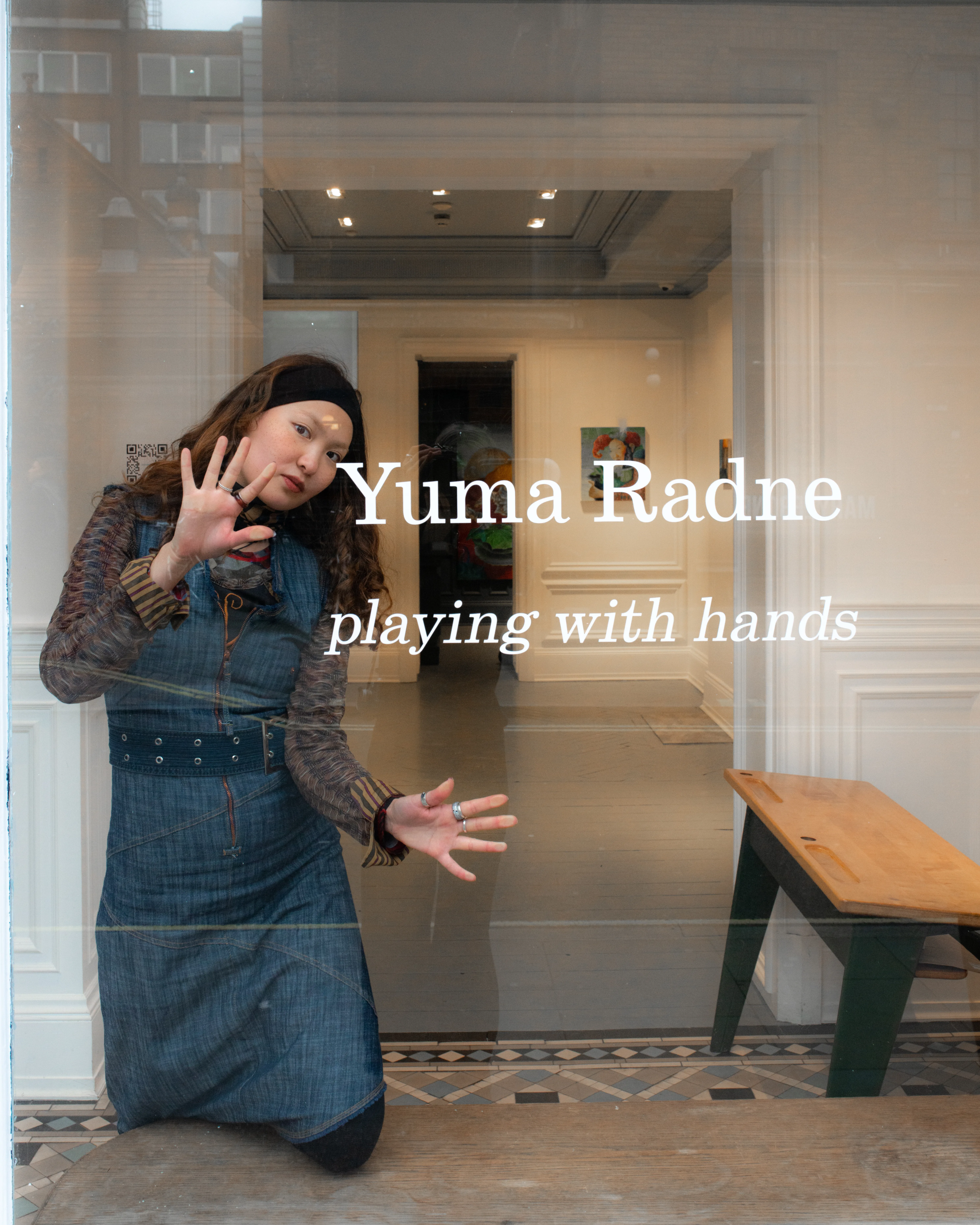
ES: A lot of your work incorporates beautiful landscapes and elements of nature which seem so far away from the city. Do you feel like your visual language has changed in each city you’ve been in—or is it something which comes from within you that isn’t really affected by your surroundings?
YR: I think it comes from within me. I grew up with nature, and maybe most of my ideas come from childhood, in some way. As a Mongolian person, I have a different relationship with nature. We are taught that nature is sentient. We have a rock spirit, a mountain spirit, a lake spirit. Some rocks and mountains are almost holy; they can give you power, and they can also take power from you. In Buryat culture, you aren’t allowed to drink water from a river after the sun has gone down, and if you do, the spirit of the water will give you an illness. If I am in the car with my parents and we go past a mountain, we will throw rice or a coin as a greeting to that being. Growing up, I was faced a lot with otherworlds—the people are very spiritual there.
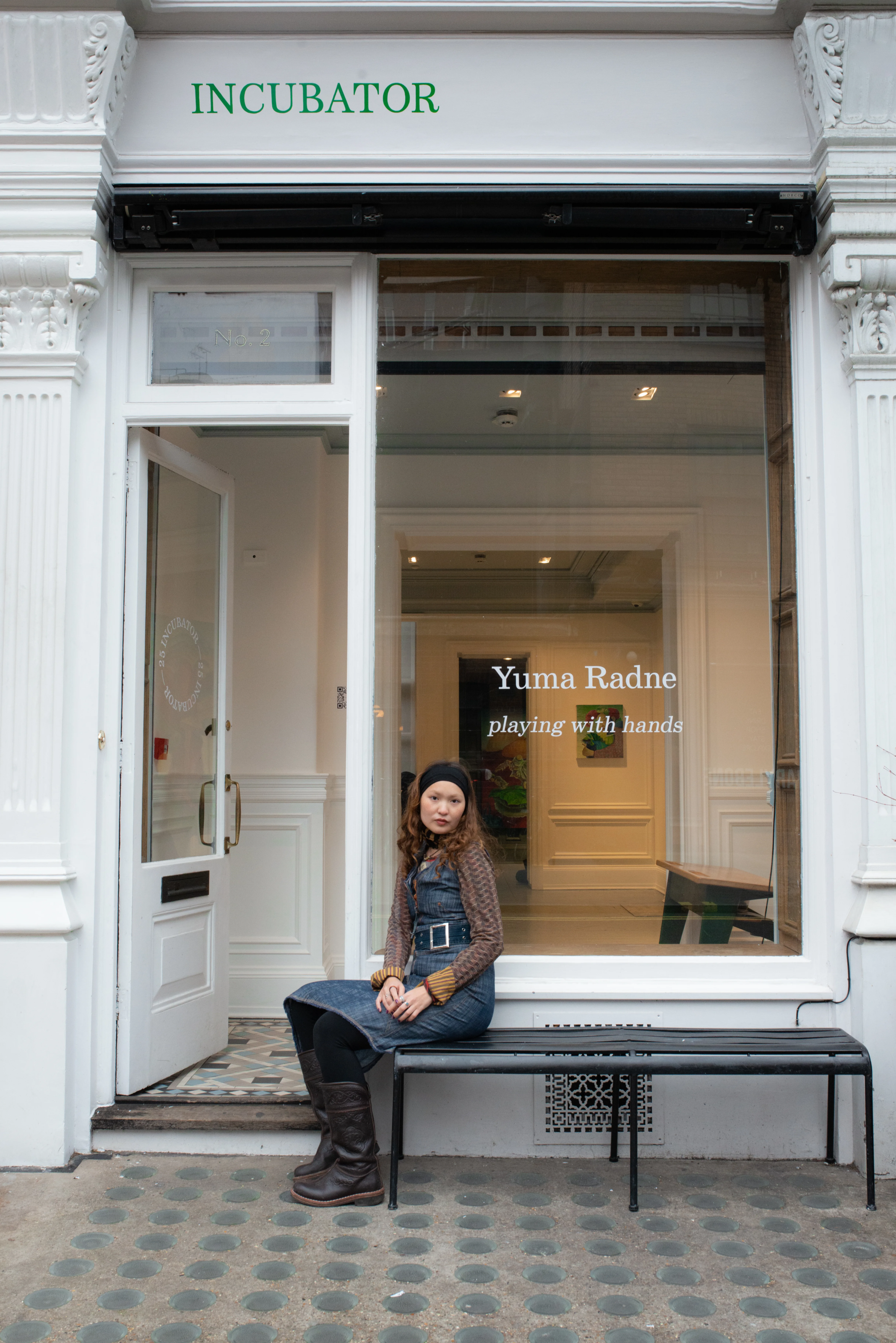
ES: Do you see your work as a way in which to remain close to your ancestry?
YR: Yes. In Buryat culture, we say that some people are more sensitive to otherworlds—these people are shamans. Artists, because they create something out of nothing, are also people that have this sense of otherworlds; they are people that see things that others cannot. Shamans can talk to spirits, and artists reach spirits through themselves; we say that ideas don’t come really from you, you are just a portal for something bigger than you. I’m not sure that any artist knows exactly where their ideas come from. They just come. Perhaps from the subconscious, the spirits, the ancestors—some kind of power—but it’s not explainable through science. For me, it’s like magic.
Words by Ella Slater
